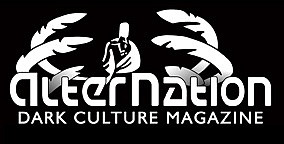Goa
Goa Trance is essentially "dance-trance" music (it was referred to as "Trance Dance" in its formative years), the original goal being to assist the dancers in experiencing a collective state of bodily transcendence, similar to that of ancient shamanic dancing rituals, through hypnotic, pulsing melodies and rhythms. As such it has an energetic beat, almost always in common time (4/4) meaning 4 quarter note pulses per bar. Time is marked with kicks (bass drum beats) on each quarter-note pulse, a snare or clap on the second and fourth pulse of the bar, with an open hi-hat sound every second eighth note. This is essentially a disco (or even polka) drum pattern and is common throughout house music and its derivatives (of which Goa Trance is one). A typical track will generally build up to a much more energetic movement in the second half then taper off fairly quickly toward the end. The BPM typically lies in the 130 - 150 range, although some tracks may have BPMs as low as 110 or as high as 160. Generally 8-12 minutes long, Goa Trance tracks tend to focus on steadily building energy throughout, using changes in percussion patterns and more intricate and layered synth parts as the music progresses in order to build a hypnotic and intense feel.
The kick drum often is a low, thick sound with a large amount of sub-bass frequencies, and is thought to be the origin of the term doof, a label for dance music and Goa Trance in particular. The music very often incorporates many audio effects that are often created through experimentation with synthesisers. A well-known sound that originated with Goa Trance and became much more prevalent through its successor, psytrance, is the organic "squelchy" sound (usually a saw-wave which is run through a resonant high-pass filter).
Other music technology used in Goa Trance includes popular analogue synthesizers such as the Roland TB-303, Roland Juno-60/106, Novation Bass-Station, Korg MS-10, and notably the Roland SH-101. Hardware samplers manufactured by Akai, Yamaha and Ensoniq were also popular for sample storage and manipulation.
A popular element of Goa Trance is the use of samples, often from sci-fi movies. Those samples mostly contain references to drugs, parapsychology, extraterrestrials, existentialism, OBEs, dreams, science, spirituality and other things that could be deemed as "mysterious" and "unconventional".
Artists belong to the genre
 |
Juno Reactor |
Country: Wielka Brytania / United Kingdom / Date of establishing : 1990 |
Pages:
1
1
